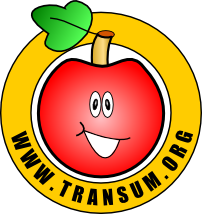Arithmetic Starters:
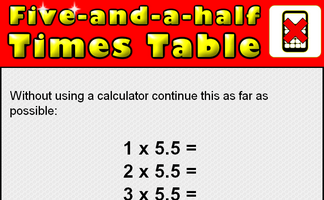
Write out the 5.5 times table as far as possible.
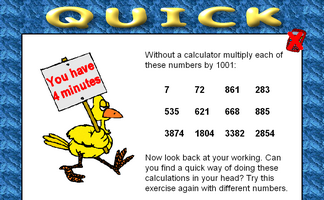
Develop a quick way of mentally multiplying any number by 1001.
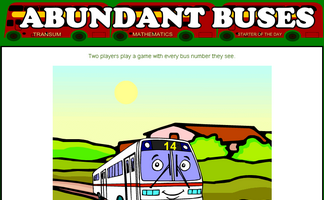
A game based around the concept of factors and abundant numbers.
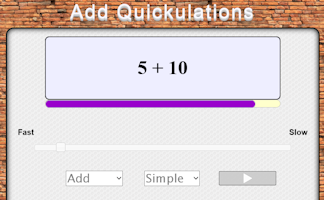
Calculations appear on the screen every few seconds. This mental arithmetic starter provides pace to the start of the Maths lesson.
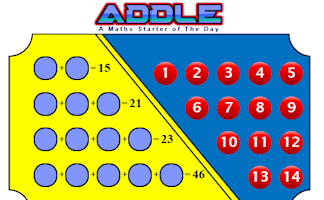
Arrange the numbers 1 to 14 in the circles so that the sums are correct.
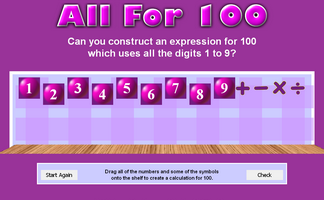
Can you write an expression for 100 which uses all the digits 1 to 9?
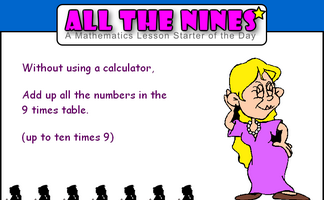
Add up all the multiples of nine in an elegant way.
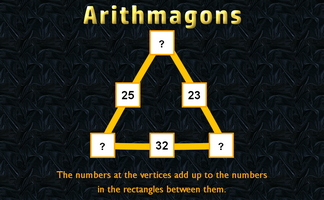
This lesson starter requires pupils to find the missing numbers in this partly completed arithmagon puzzle.
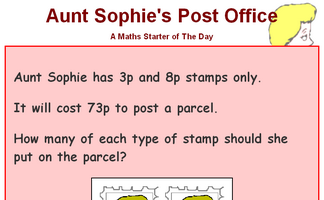
Work out the number of stamps needed to post a parcel.
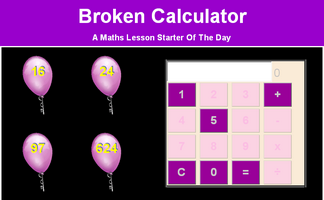
Use only the 1, 5 and 0 keys on a calculator to make given totals.
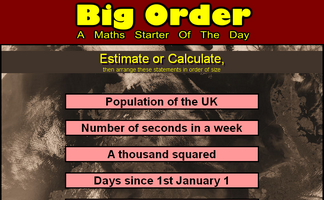
Estimate or calculate then put the large numbers in order of size.

The calculations are obscured by ink blots. What do you think the calculations would look like if there were no blots?
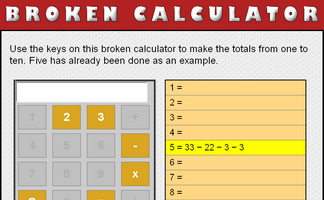
Make the numbers 1 to 10 using only the keys on the broken calculator.
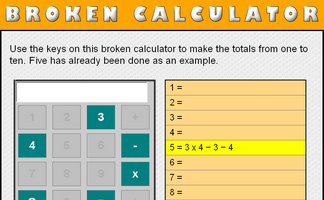
Some keys are missing from this calculator. Just how useful is it?
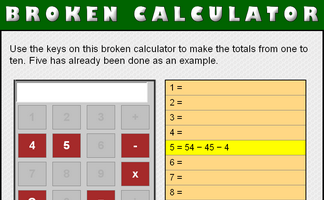
Which numbers can be made with the buttons which have not yet dropped off this calculator?
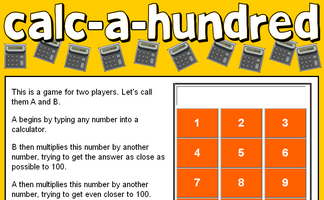
A game for two players requiring a calculator and thinking skills.
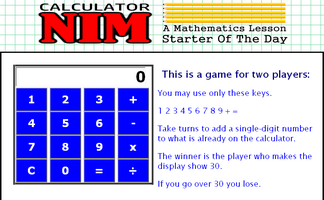
A game in which players take turns to add a single-digit number to what is already in the calculator. The winner is the player who makes the display show 30.
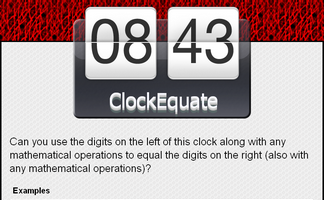
Can you use the digits on the left of this clock along with any mathematical operations to equal the digits on the right?

Some calculations are partly obscured. Work out what those calculations might be.
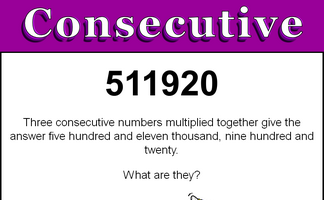
Three consecutive numbers multiplied together give a given product. Pupils are asked to figure out what the numbers are.
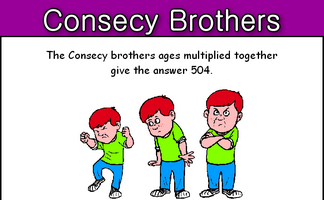
Which three consecutive numbers multiplied together give the given answer.

How close can you get to the target by making a calculation from the five numbers given?
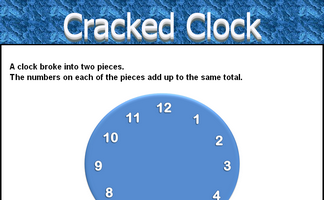
How did the clock break if the numbers on each of the pieces added up to the same total?
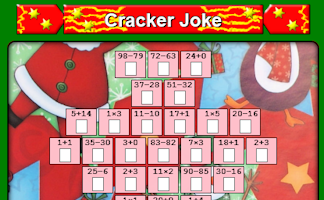
Answer the mental arithmetic questions then convert the answers to letters to find the joke.
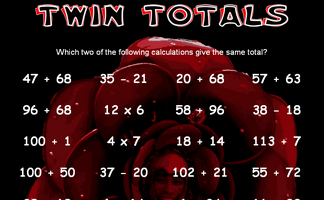
Decode the message by doing the calculations given for each letter.
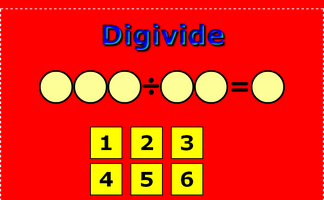
Arrange the digits 1 to 6 to make a three digit number divided by a two digit number giving a one digit answer.
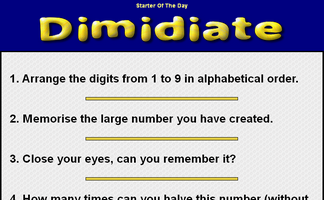
Arrange the digits from 1 to 9 in alphabetical order. How many times can this number be halved?
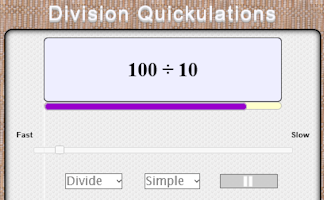
Random division calculations appear on screen every few seconds.
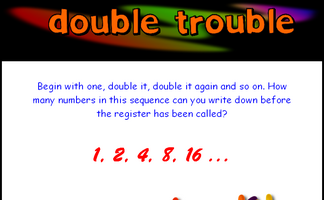
Begin with one, double it, double it again and so on. How many numbers in this sequence can you write down before the register has been called?
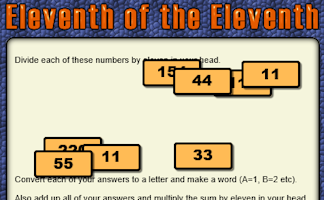
Practise multiplying and dividing by eleven in your head.
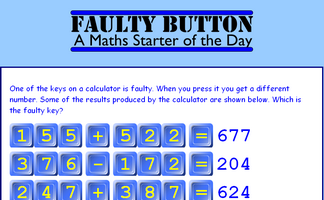
Find out which of the calculator keys is faulty from the given information. A mathematical puzzle requiring good problem solving strategies.
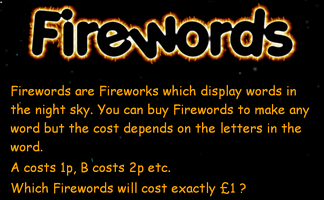
Find words which cost 100p if A costs 1p, B costs 2p etc
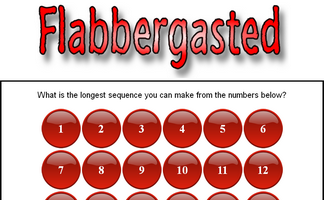
If each number in a sequence must be a factor or multiple of the previous number what is the longest sequence that can be made from the given numbers?
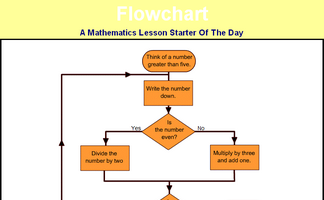
Use the flowchart to generate a sequence of numbers. Which number will reach 1 the fastest?
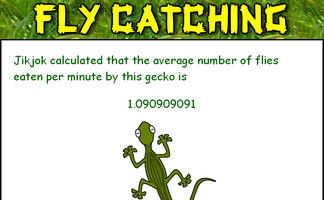
Find which whole number divided by another whole number gives the answer: 1.090909091
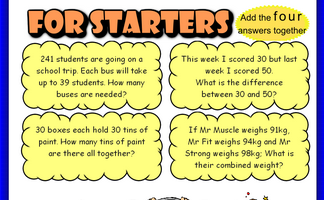
Four problems involving addition, subtraction, multiplication and division

Add up the answers to the four real life questions.
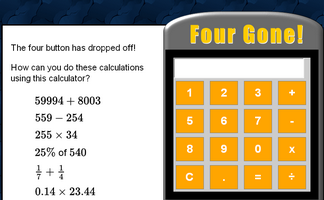
An activity involving a broken calculator which is missing the four button. Can you evaluate the given expressions without using the four?
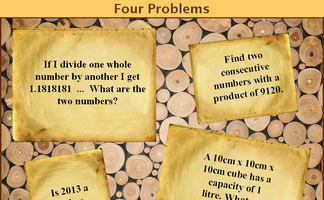
For mathematical questions to get everyone thinking at the beginning of the lesson.
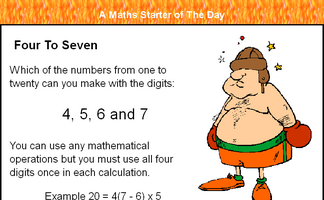
Which of the numbers from one to twenty can you make with the digits 4, 5, 6 and 7?
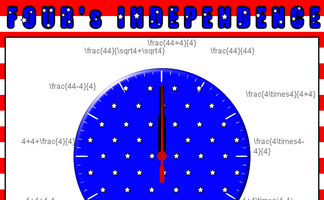
A clock face containing only the number 4. Can you make a clock face containing any other single number?
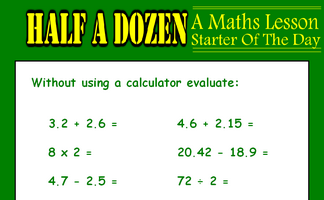
Six calculations to complete without a calculator.
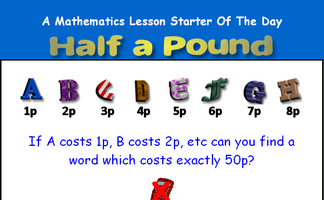
If A costs 1p, B costs 2p, etc can you find a word which costs exactly 50p?
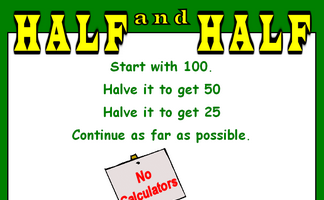
Start with 100. Halve it to get 50. Halve that to get 25. Continue as far as possible.
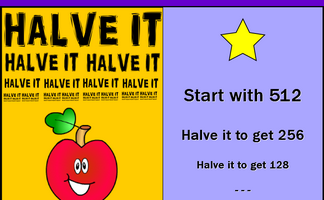
Start with 512. Halve it to get 256. Halve it to get 128. Continue as far as possible.
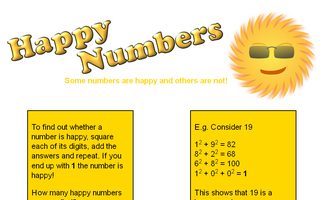
To find out whether a number is happy or not, square each of its digits, add the answers and repeat. If you end up with 1 the number is happy! How many other happy numbers can you find?
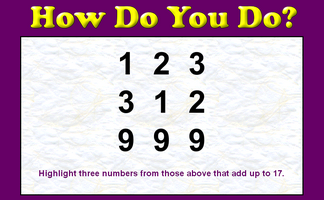
A little lateral thinking will help you solve this number puzzle.

Pens cost 12p each, Pencils cost 9p each, Richard spent 72p altogether. How many pens and pencils did he buy?
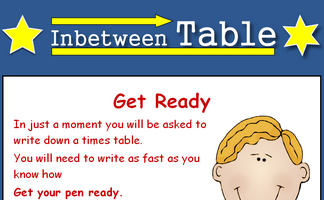
Write down as many multiples of 3.5 as possible in 3.5 minutes.
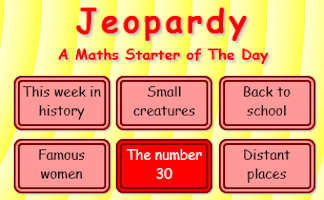
Loosely based on the famous television show, how many questions cn you come up with for a given answer?
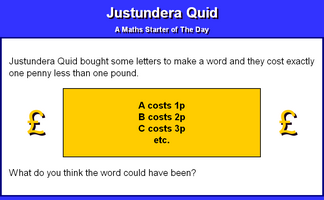
Find a word whose letters would cost exactly ninety nine pence.
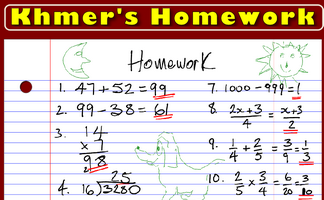
Check a student's homework. If you find any of the answers are wrong write down a sentence or two explaining what he did wrong.
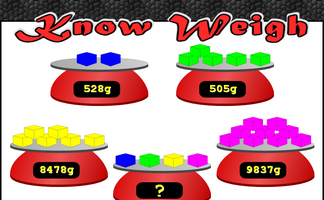
Find the weight of one cuboid (by division) of each colour then add your answers together.
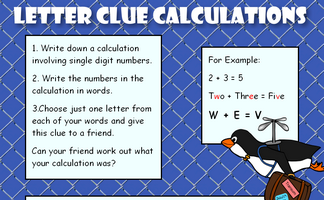
Work out what the calculations might be from the letter clues.
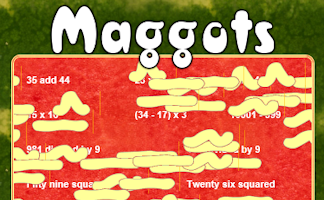
Do as many of the calculations as possible before the maggots infest!
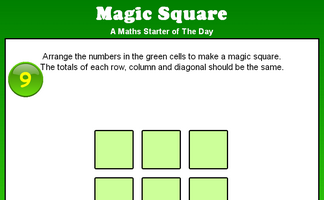
Arrange the numbers 1 to 9 in a 3 by 3 grid to form a magic square.

Add together the dates of all the Thursdays in May this year. Which day sum is largest?
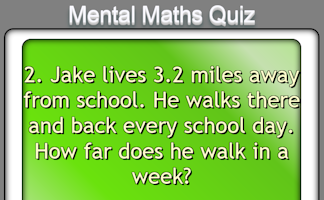
A traditional twenty question mental arithmetic test presented as a PowerPoint presentation.
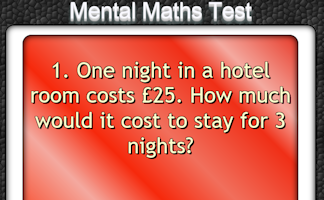
The starter is a PowerPoint file containing a twenty question mental arithmetic test. It will advance from one question to the next automatically.

Which numbers when multiplied by the number of letters in the word(s) of the number give square numbers?
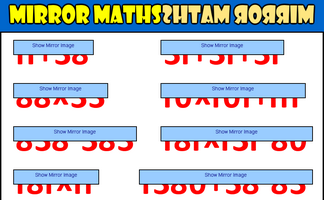
The bottom half of some symmetrical calculations are shown above. Can you work out the answers?
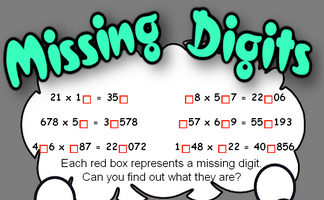
Find which digits are missing from the randomly generated calculations.
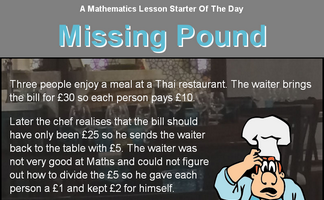
A puzzle about a restaurant bill. Exactly where did the missing pound go?
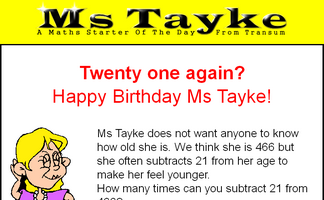
How many times can you take one number from another?
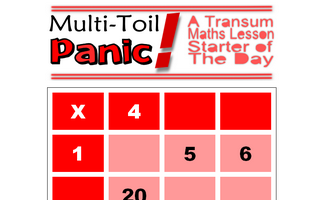
Copy and complete the multiplication grid. The higher levels include negative numbers.
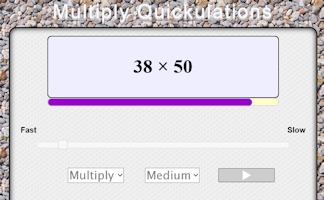
Random multiplications appear on screen every few seconds.
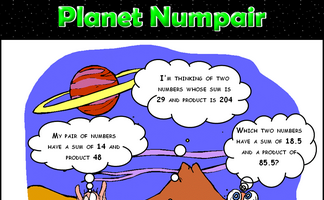
Arrange the digits one to nine to make a correct addition calculation.
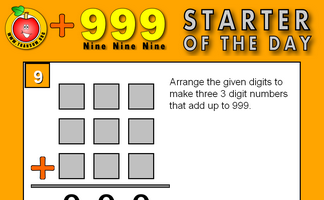
Arrange the numbers 1-9 to make three 3 digit numbers that add up to 999.
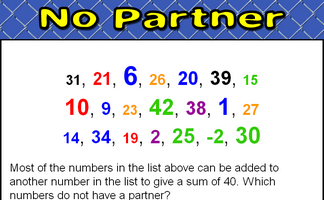
Find which numbers in a given list do not combine with other numbers on the list to make a given sum.
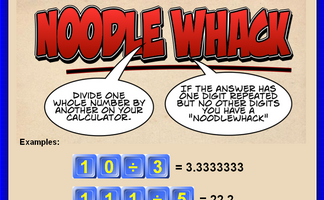
Divide one whole number by another on your calculator. If the answer has one digit repeated but no other digits you have a Noodlewhack.
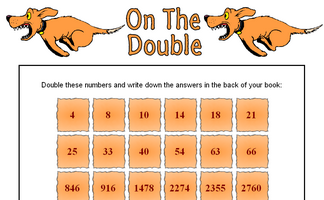
Double the numbers given in the table.
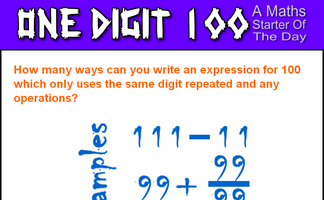
How many ways can you write an expression for 100 which only uses the same digit repeated and any operations?
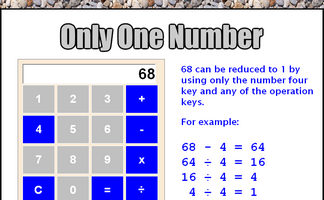
Find other numbers that can be changed to 1 on a calculator using only the 4 key and any operation.
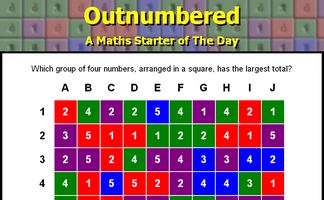
Which group of four numbers, arranged in a square, has the largest total?
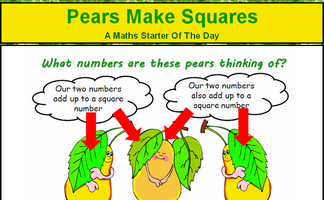
Find three numbers such that each pair of numbers adds up to a square number.
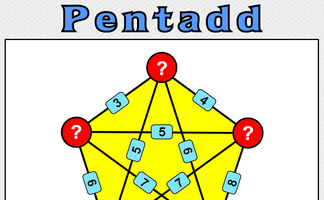
Five numbers are added together in pairs and the sums shown. What might the five numbers be?
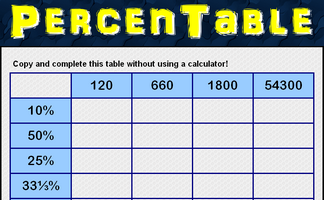
Complete the table by calculating common percentages without using a calculator.
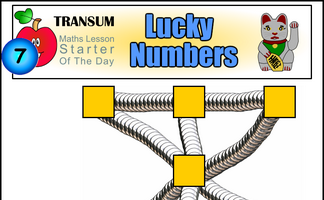
Arrange the numbers so that the totals of the three numbers along any pipe are the same.
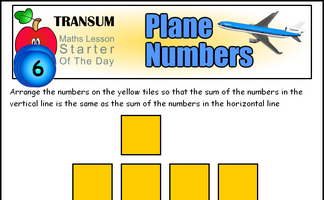
Arrange numbers on the plane shaped grid to produce the given totals
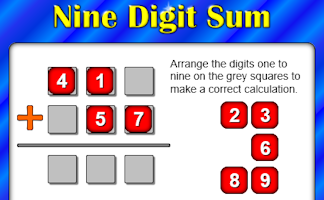
The sum and product are given, can you find the two numbers?

If six girls can plant 90 trees in a day. How many trees can ten girls plant in a day? The unitary method.
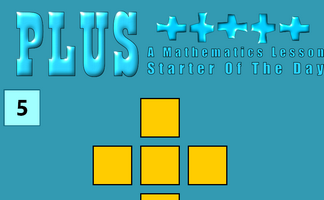
A number puzzle suitable for children with a wide range of abilities.

Work out the answers to the four given sums then add the answers together.
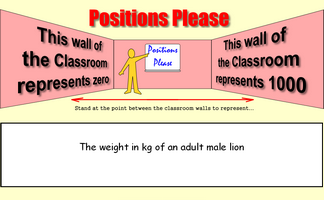
Stand at the point between the classroom walls to represent a given number.
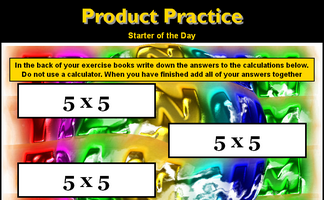
Work out the answers to the given calculations then add the answers together. There are three different levels of difficulty.
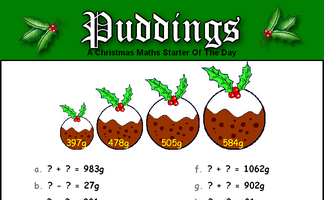
Complete the calculations with the weights of the puddings
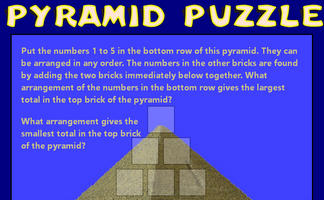
Arrange numbers at the bottom of the pyramid which will give the largest total at the top.
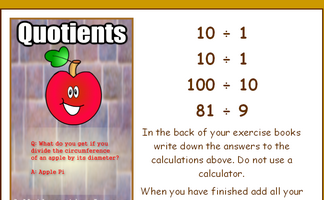
Work out the answers to the given division calculations then add the answers together.
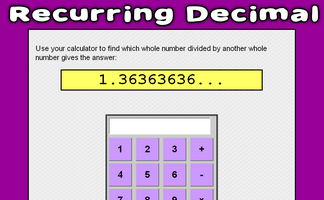
Use your calculator to find which whole number divided by another whole number gives a recurring decimal.
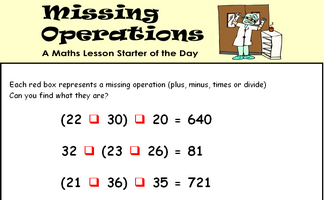
It is called Refreshing Revision because every time you refresh the page you get different revision questions.
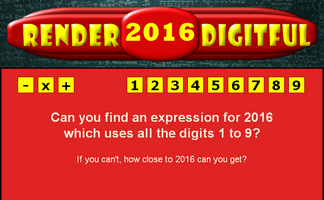
Find a calculation for the current year which uses all of the digits 1 to 9.
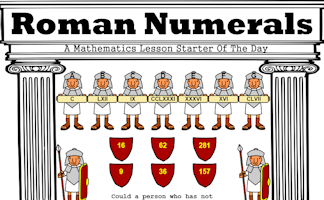
Learn a very different method for writing numbers using Roman numerals.
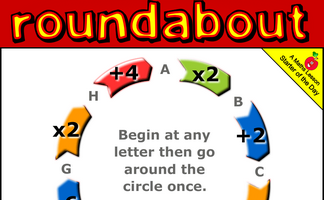
Go around the roundabout performing each of the operations. Which starting point gives the largest answer?
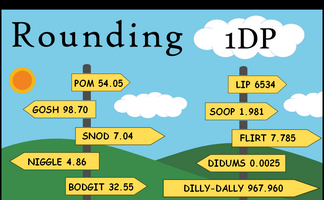
Round off the given numbers to 1 decimal place then add the answers together.
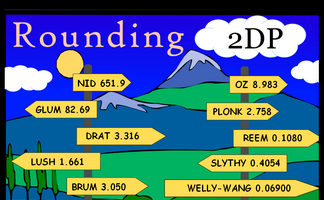
Round off the given numbers to 2 decimal places then add the answers together.
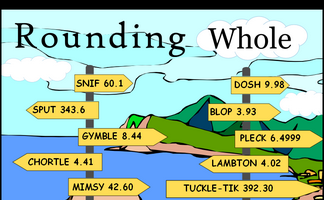
Round off the given numbers to the nearest whole number then add the answers together.

Work out the cheapest way from Los Angeles to Las Vegas by choosing the best route and adding up the given numbers.
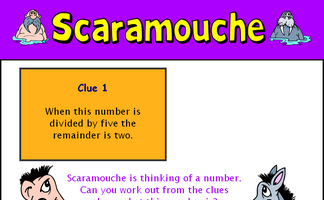
Can you work out from the five clues given what the mystery number is?
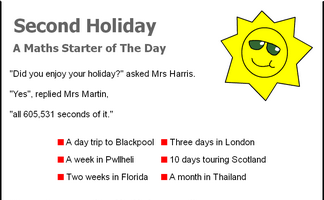
Estimate then work out the period of time equal to the given number of seconds.
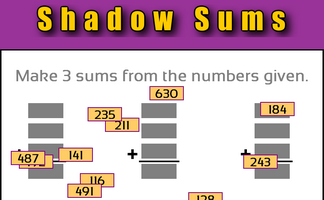
Make sums from the three digit numbers given.

Work out which is the best scheme for Sid to choose for his summer bonus. One scheme involves a common misconception about percentages.
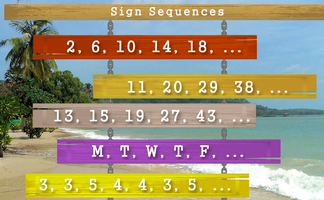
Continue the sequences if you can work out the rule.
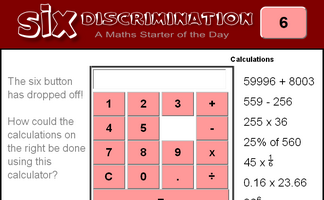
An activity involving a calculator which is missing the six button. Can you evaluate the given expressions without using the six?
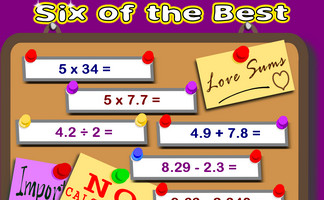
Six calculations to perform without a calculator.
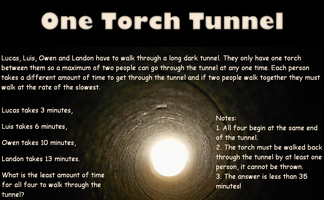
Many basic numeracy questions generated from the number selected by the wheel of fortune.
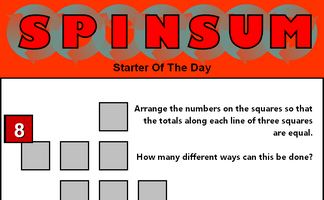
Arrange the numbers on the grid of squares so that the totals along each line of three squares are equal.
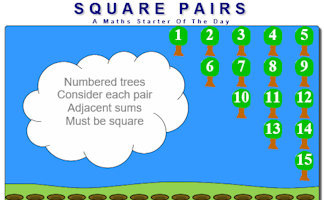
Arrange the numbered trees so that adjacent sums are square numbers.
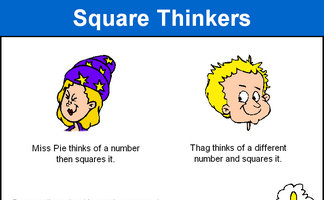
Can you find three square numbers where the third is the sum of the first two?
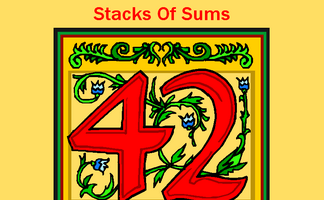
Write down many different types
of calculations which give a particular answer.
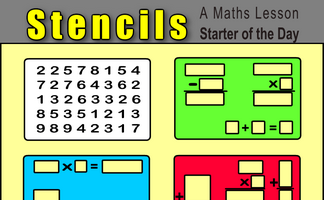
Which of the coloured stencils will fit over the numbered card to produce correct calculations?
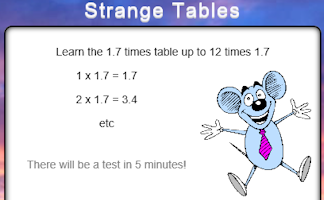
A challenge to learn an unfamiliar times table involving decimals.

Six students borrow £5000 to help pay for their university course. Calculate how much each student will have to pay back to the lender.
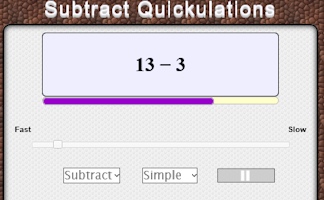
Calculations appear on the screen every few seconds.
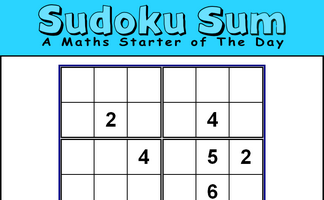
What is the sum of the numbers missing from the given Sudoku puzzle?
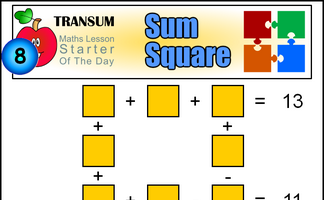
Arrange the numbers one to eight into the calculations to make the totals correct..
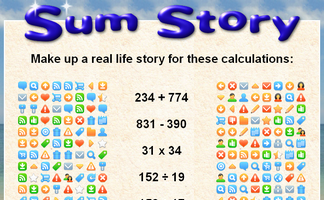
Make up real life stories for the given calculations.
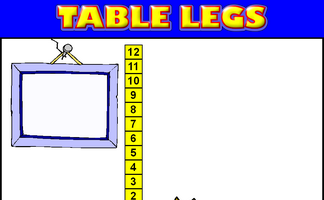
Learn an unusual times table from the strategic finger moving up and down the 'Table Leg'!
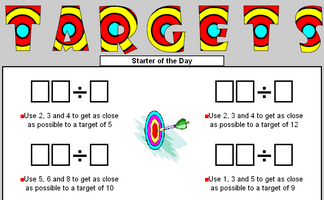
Use the given numbers to produce a calculation to get as close as possible to the given target.
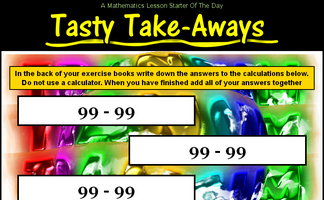
Four subtractions to be done without a calculator. The answers are then to be added together.
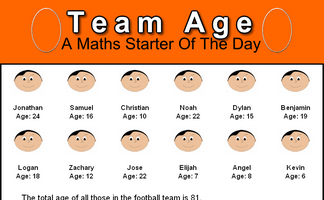
Work out who is in which team from the information given.
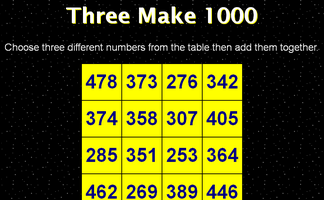
Find three numbers from those given that add up to 1000. How many different sets of three numbers can be found?
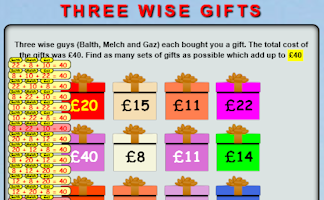
Find as many sets of three of the available numbers as possible which add up to the given total.
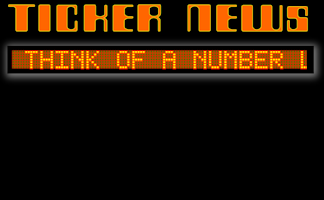
A Think Of A Number problem presented as a news ticker.
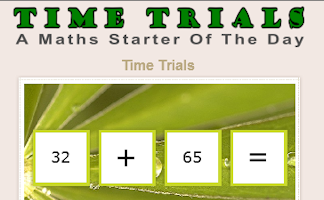
You have 10 seconds to answer each of the mental arithmetic questions.
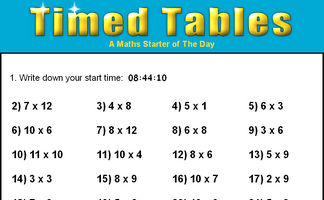
How fast can you answer 24 mixed times tables questions?
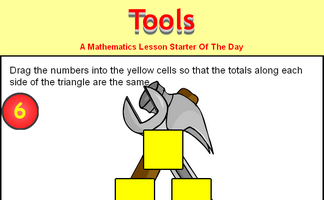
Place the numbers on the triangle so that the totals along each of the sides are equal.
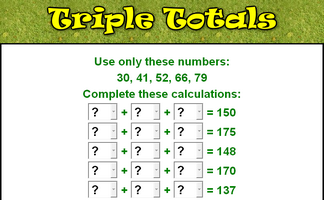
Complete the sums using only the given numbers then check your calculations are correct.
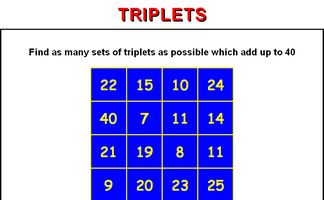
Find as many sets of three of the available numbers as possible which add up to the given total.
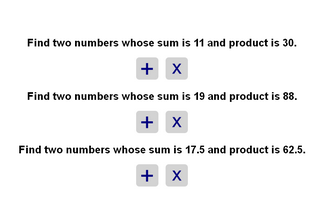
Find the two numbers whose sum and product are given.
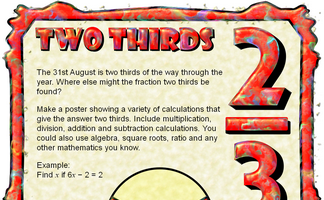
Make a poster showing a variety of calculations that give the answer two thirds.
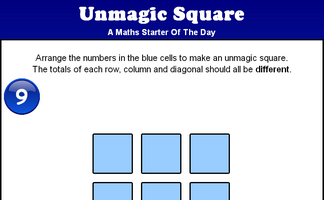
Arrange the numbers 1 to 9 in a 3 by 3 grid so that none of the line totals are the same.
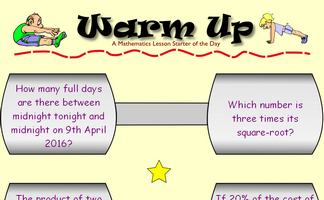
Four quick Maths questions to warm up the brain.
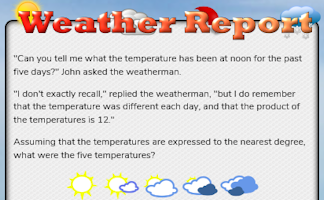
Find five different integers that multiply together to give a product of twelve.
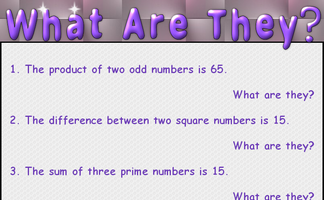
A starter about sums, products, differences, ratios, square and prime numbers.
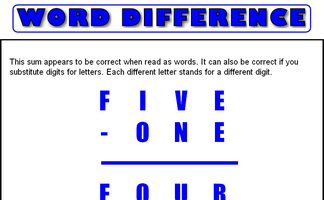
Can you find substitutions which will make the word sum correct?
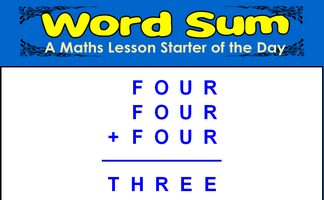
Each letter stands for a different digit. Can you make sense of this word sum?
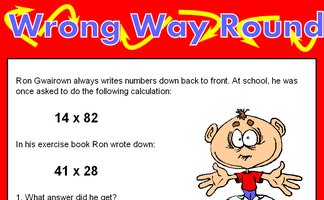
Find calculations which written back to front give the same answer.
Other activities for this topic | | |
Complete Index of Starters
Featured Activity
Newsletter

The Transum Newsletter for December 2025 has just been published. Click on the image above to read about the latest developments on this site and try to solve the puzzle of the month. You can read the newsletter online or listen to it by downloading the podcast.
